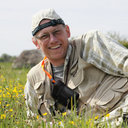
Jonas VictorssonSwedish County Administration Board Kalmar · Department of Nature Conservancy
Jonas Victorsson
PhD Animal Ecology
About
18
Publications
2,675
Reads
How we measure 'reads'
A 'read' is counted each time someone views a publication summary (such as the title, abstract, and list of authors), clicks on a figure, or views or downloads the full-text. Learn more
402
Citations
Introduction
I do planning for Green Infrastructure at the County Administrative Board of Kalmar, Sweden.
Publications
Publications (18)
We present data on species composition and activity of bats during two years at three different wind- turbines, located in south Sweden, both at the base and nacelle height. To test the hypothesis that bats are attracted to wind turbines because of feeding opportunities, insects were sampled at nacelle height at one wind turbine using a suction tra...
The pselaphine Leptoplectus spinolae (coleoptera: staphylinidae: Pselaphinae) is redlisted (VU) in Sweden with only three previous records from the country, all from an hot spot area in se Sweden. Here we report records from three clearcuts in central Sweden in 2013, two of them near Laxå (province: Närke) and one near Finspång (Östergötland), 2 or...
When stumps on clear cuts are harvested for bioenergy, retention of a share of them is recommended to mitigate environmental issues. To maximise benefits for the diversity of saproxylic beetles, retention should be done in dry positions. Saproxylic dipterans are usually thought to be associated with wetter wood substrates. We therefore hypothesised...
To harvest more biofuel from forests, tree stumps are sometimes extracted after clearcutting. Species in different organism groups rely on deadwood, and biofuel extraction reduces their substrate. Our aim was to investigate the potential landscape effects of stump extraction, and compare the effects among trophic levels of deadwood-dependent (sapro...
In Sweden, tree stumps are currently considered as a potential resource for bioenergy production. However, environmental effects of stump harvesting – in particular when applied on a larger scale – are regarded as a potential threat to biodiversity in forests but are only poorly investigated. This is especially true for the numerous non-coleopteran...
Stump extraction (which include removal of coarse roots) will reduce the available habitat for insects breeding in dead wood (saproxylic species). The root-living diversity is largely unknown which is unsatisfactory as 68% of the wood harvested at stump extraction is root wood. We compared the diversity of saproxylic beetles in Norway spruce, Picea...
Community assembly is the trajectory exhibited over time regarding species composition and community structure as species colonize an empty patch. Chase (2007) distinguish two basic types of assembly where a niche-assembled community is constrained by species interactions and competitive hierarchies whereas a dispersal-assembled community is unaffe...
Before modern forestry started, forest fire was the dominating large-scale disturbance in boreal forest. Prescribed burning of clear-cuts is increasingly used as a conservation measure but is potentially less beneficial for fire-associated species than burning of intact forest. We investigated the temporal effect of prescribed burning of clear-cuts...
Stump extraction for bio energy is a new forestry activity and before large‐scale implementation occurs, it is important to analyse its consequences. Saproxylic beetles depend on dead trees and stump extraction will reduce the amount of habitat available for this group.
Early warning signs of impending regional species extinctions were looked for i...
1. Acanthocinus aedilis (Linnaeus) and Rhagium inquisitor (Linnaeus) both colonise the cambial layer in newly dead Scots pine Pinus sylvestris L. and thus are potential competitors.
2. Species interactions and in particular priority effects were investigated in an experiment with a replacement series design. Four pairs of adult beetles were release...
An increasing demand for bioenergy has stimulated interest in harvesting of tree stumps after felling operations. To reduce the amount of soil disturbance, it is recommended to retain stumps in wet areas. We wanted to evaluate if that strategy is beneficial also for saproxylic (wood-living) insects, which will have less habitat to breed in at stump...
Stump storage piles created at stump extraction are stored next to the extraction clear-cuts for 2 years. These storage piles may become a trap for saproxylic insects (dependent on dead wood) if they attract many breeding individuals, whose offspring are killed at biofuel processing. Stumps in clear-cuts are also an important habitat for many speci...
Sexual selection often favors brighter and exaggerated traits, which also increase the risk of detection by predators. Signals that are preferentially conspicuous to conspecifics would reduce the predation cost of signaling and, therefore, might facilitate the evolution of stronger sexual and social signals. This selective signaling is possible if...
In a study in Sweden, 1-year old larvae of Monochamus sutor produced regular chirping sounds, easily heard up to 10 m away. Larvae were positioned within their hibernation tunnel in sapwood of recently fire-killed spruce (Picea) and pine (Pinus) trees. Their heads were directed outwards, and the sound was probably produced by the scratching of thei...



































